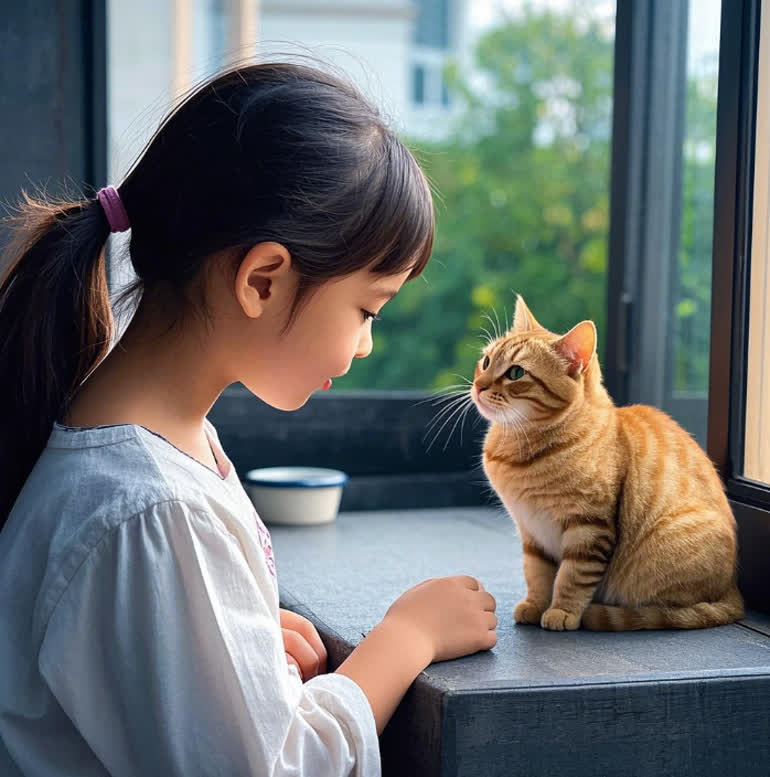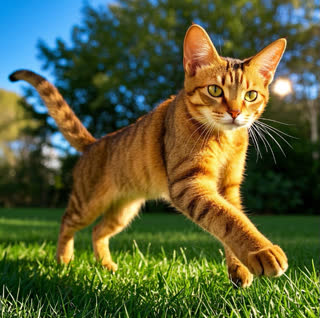Have you ever wondered what truly goes on inside your cat’s mind? Cat facts reveal a world far more complex than their aloof demeanor suggests. From their mysterious hunting instincts to their surprising emotional depth, understanding these fascinating cat facts can transform how you interact with your feline companion. In this guide, we’ll explore the science behind their behaviors, debunk myths, and uncover secrets that even seasoned cat owners might miss. Let’s dive into the captivating universe of cat facts!
1. The Hunter’s Paradox: Why Cats Hunt Even When Fed
Cats are born hunters, but why do well-fed house cats still stalk toys or shadows? This behavior stems from an evolutionary imperative. Studies show that domestic cats retain 95% of their wild ancestors’ instincts, making hunting an ingrained survival trait12.
Energy Reserves: Cats sleep 15–20 hours daily to conserve energy for hunting bursts at dawn and dusk, mimicking their wild counterparts.
Play as Practice: Pouncing on toys isn’t just fun—it’s practice. Kittens learn coordination and stealth through play, a trait observed even in feral colonies.
The “Gift” Ritual: Bringing prey to owners isn’t a gruesome quirk. Biologists suggest it’s a social bonding behavior, akin to teaching kittens to hunt.
Pro Tip: Provide puzzle feeders to satisfy their hunting drive indoors.
2. Decoding Feline Communication: Eyes, Tails, and Whiskers
Cats communicate subtly, and understanding their body language is key to becoming a "cat whisperer".
Eyes:
Wide-open eyes signal curiosity or alertness.
Slow blinks indicate trust—a “cat kiss” you can return.
Dilated pupils may mean fear or excitement, depending on context.
Tail Movements:
A upright, quivering tail signals happiness.
A thrashing tail warns, “Back off!”.
Vocalizations: Beyond meows, chirps (for hunting) and purrs (for self-soothing) reveal their emotional state.
Cat Fact: Unlike dogs, cats rarely evolved to rely on humans—their communication style remains finely tuned to independence.
3. The Science of Cat Love: Do Cats Really Bond With Humans?
Contrary to the myth of feline aloofness, research proves cats form deep emotional bonds. A 2024 study found that cats mirror their owners’ stress levels and seek comfort during anxiety.
Attachment Styles: Like human infants, cats display secure or insecure attachment to owners.
Scent Marking: Rubbing against you isn’t just affection—it’s claiming you as “family” through scent glands.
Mutual Grooming: Licking your hand or hair mimics social grooming in cat colonies, a sign of trust.
Pro Tip: Strengthen your bond by respecting their boundaries—forceful interaction can break trust.
4. Bizarre Behaviors Explained: From Cucumber Fears to Midnight Zoomies
Some cat facts defy logic but have scientific roots:
Cucumber Phobia: Cats often panic at cucumbers because their shape resembles snakes—a primal predator trigger.
Midnight “Zoomies”: Sudden nighttime sprints release pent-up energy, a relic of crepuscular hunting habits.
Kneading: This rhythmic pawing, often on soft surfaces, stems from kittenhood nursing behavior and signals contentment.
Myth Buster: Cats aren’t “vengeful”—knocking objects off tables is curiosity, not spite.
5. Health Clues Hidden in Daily Habits
Subtle changes in behavior can signal health issues:
Excessive Hiding: Sick cats often isolate themselves, a survival instinct to avoid predators.
Litter Box Avoidance: May indicate urinary tract infections or stress.
Overgrooming: Linked to allergies, pain, or anxiety.
Cat Fact: Regular vet checkups are crucial—cats instinctively hide pain, making early detection challenging.
Conclusion: Embrace the Mystery, Deepen the Bond
Understanding fascinating cat facts isn’t just about trivia—it’s about building a richer relationship with your pet. By decoding their behaviors through science and empathy, you’ll uncover a world of intelligence, emotion, and wild beauty. As biologist Marc Bekoff notes, “Cats are pure awareness, capable of mutual love with humans”.










